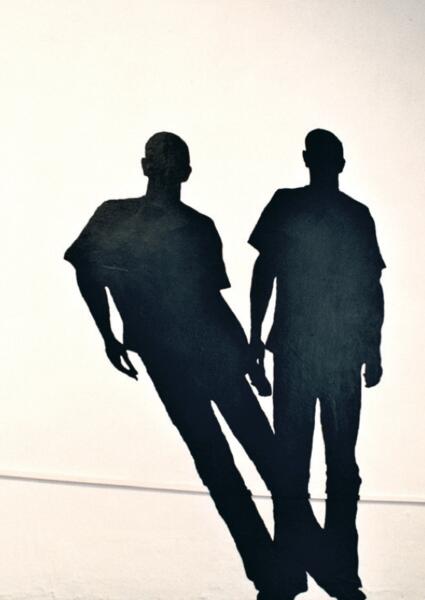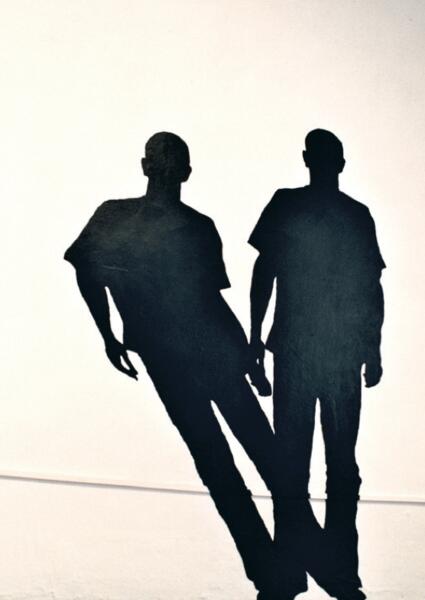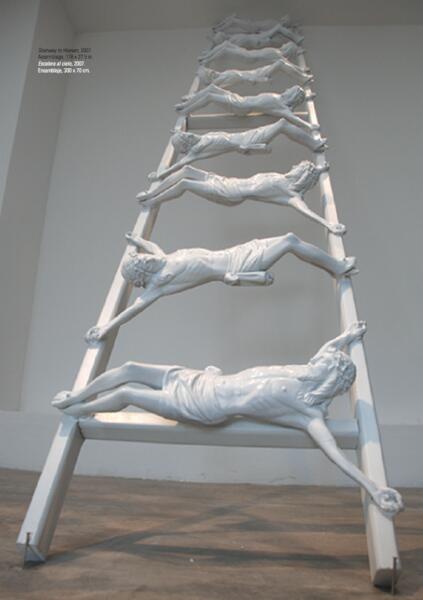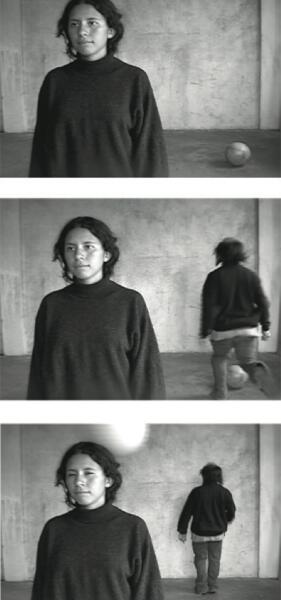Douglas R. Rada
THE RADICAL REFLECTION
It might be stated that present-day art, and more specifically the field of the visual arts, has reached a point where it is possible to distinguish two trends: one is marked by the predominace of the spectacle and its propension to create a sensasionalist and dazzling aesthetics based on grandiloquent or technological formats; as a result of a visual culture governed by consumerism and haste, the spectators are immersed in a passive existence, reduced to the only remaining “active” gesture: to consume. In a consumer society, to favor an image over a thought is not only more convincing but also more convenient: “a picture is worth a thousand words”, and besides, it spares us from reflecting. This intensified fascination for the merely visual has infiltrated into biennials and it is driving the growing biennialization of art around the world towards becoming an aesthetic banalization of the world. The spectacularity effect, which some artists and curators consider a visibility strategy, is in fact a characteristic resource of the capitalist system that, as far as art is concerned, merely hides the absence of reality or covers up a possible conceptual density.

The other trend reflects more accurately the historical nature of contemporary art, or it shows, at least, a greater potentiality; in this case the work reveals a kind of insight capable of decoding/recoding the reality or culture it reflects upon without paying much attention to the actual medium employed, and in which the image, or pure visuality, no longer exists in its own right. This characteristic is such that it grants art a relevance by comparison with academic philosophy, not in terms of systematic speculation, of course, but at a critical/cognitive level. It is true that the visual element still informs us in order that a work of art may convey to us how significant it is, but it is no longer the most interesting element.
However, this way of making art entails a double difficulty for its reception: on the one hand, it demands from the viewer, after Duchamp, an active, reflective attitude that is certainly scarce in our society of visual consumerism, and on the other, the work turns out to be scarcely attractive for senses that are accustomed to formal lyricism and sensory seduction: it is sober and austere, as is characteristic of that which seeks the essential and avoids redundancies and unnecessary forms.
We can find a remarkable example of these kinds of works in the ensemble of pieces that comprise the oeuvre of a Bolivian artist who is chronologically young but sufficiently mature from an artistic point of view to present an oeuvre that is free from the vacuous glitter of unnecessary ornament; we are referring to Douglas Rodrigo Rada. Rada’s artistic production includes drawing, objects, video, performance and painting; however, his conceptual purpose, that particular need to focus the sense and the signifier on anything that may be used to this end, has gradually decanted itself into the utilization of drawing, art objects and video, mainly.
Whereas the attitude of working with meanings rather than with forms and colors is a characteristic of present-day artists, there is a certain radicality in the way in which D. R. Rada assumes this task. Indeed, drawing is not a signifying, autonomous thing-in- itself, but as a medium, it defines, in and by itself, a reductionist capacity that the author conveniently takes advantage of, not only to schematize complexity but to construct a reflective process that crystallizes ideas and forms in a permanent way. Thousands of Rada’s drawings attest to this capacity to process his works before they are decanted into an art piece.
Black and white, whether in the form of linear or blot drawing, does not pursue an economy of means or a strategy of a graphic nature; rather, it is a clear response to the need to essentially schematize the unceasing and confusing prattle of reality; to use the minimum amount of material to achieve the maximum possible result is, more than a minimalist postulate, an attitude aimed at effectiveness, not only in art but also in life.
D. R. Rada’s drawings resemble the Zen artists’ austere black lines, while these, too, make reference to the essential “skeleton” of reality; they both do philosophy by means of reflective perceptual forms.
Hopwever, in Rada’s work, unlike in the work of the mentioned artists, the reality that is alluded is human reality; it is man that reflects on man (interno Drawing), to verify that his nature is a cultural construction rather than an ontological one, but it appears before us under the form of deconstruction.
Just like E. M. Cioran addresses with cold lucidity the dismantling of the most cherished truths and values of the human species, stripping them of any conceptual or metaphysical grounds that might justify their existence, Rada’s oeuvre repeatedly appears as the ludic deconstruction, certainly pessimistic and clearly Postmodern, of a certain everyday, stereotyped rationality, which has rooted its certainties and its assuredness on the belief in man as a definitive truth. With a touch of cynicism, Rada seems to play, via paraphrase, with Spinoza’s idea when he states: “We shall never be able to know what the human body is capable of”. Indeed, the reality that Rada’s work makes reference to is not that of nature, but the human one that has been gradually built on the basis of its own aspiration − absurd and tragic − to differentiate itself from nature, and on the unsuccessful intention of dominating it (jinete Drawing). To its judgment, the human being is always an infinite possibility derived from its obsession to be something else without before having been something. Infinite division, infinite identitary tautologies, infinite artifacts, anyway, that infinitude will collapse perennially as deficiency, as a tearing apart, as a deficiency that requires a surgical aid (ciclista Drawing), which is, however, insufficient, or what is even worse, which takes the form of a new ailment (amputado Drawing). Man pretends to create himself, but that purpose is never completed because he is not the master of his own destiny, either (Pelota Video).
Immersed in uncertainty and self-deprived of the world of nature in which it could have found its certainty, its identity and its home, the only thing left for the human being to do is to invent itself and construct its own home, its own certainties or artifacts, but these are merely an ephemeral palliative; moreover, the human oeuvre is a fruitless work, inevitably destined to failure: the human effort constructs in one place but at the same time, it undermines another; such is the history of every industry.
Despite the absence of utopia, idealism or romanticism in Rada’s oeuvre (escalera al cielo object), it is, from its very conception, not only a perceptive and uncompromising commentary on postmodern man but a way of understanding art on the basis of radical reflection, free from the demands of the market and the “good manners” of an increasingly spectacular and mediocre − while at the same time less reflective − visual aesthetics.
Profile:
Douglas Rodrigo Rada was born in La Paz, Bolivia, in 1974. He has participated in exhibitions in different countries, including Australia, Chile, Spain, the USA, Brazil, China, Argentina and Mexico. In 2003 he participated in the Residency Program at APEXART- New York, USA. In 2005 he was awarded First Prize at the SIART Biennial in Bolivia. In 2008 he participated in the Residency Program at BATISCAFO, in Havana, Cuba, and in the VIDEOARDE exhibition, Spanish Cultural Center, Mexico City; in 2010 he showed at Galería MORO in Santiago de Chile, and he participated in the group exhibition “BOLIVIA: Los caminos de la escultura”, at Fundación Simón I. Patiño and at the URRA art residency, Buenos Aires, Argentina.







